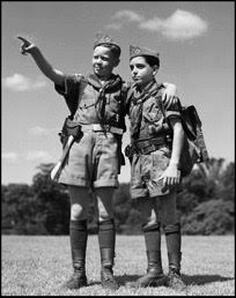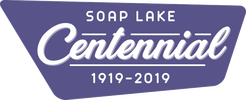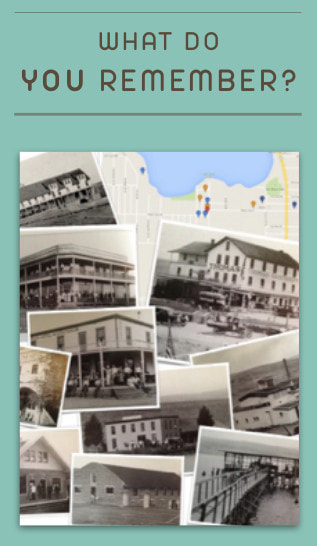|
by Michael Collins
When I was growing up in a small town in Eastern Washington, wintertime was not to be wasted by sitting around the house. We had cold winters, sometimes with temperatures that fell below zero, and always some snow. The snow would melt or get blown away by gale force winds eventually, but before it did we made full use of it – every flake of it. We built snow forts and snowmen. We also sledded, skied and tobogganed. We threw thousands of snowballs: I’m pretty sure that’s why I became a pitcher in Little League and excelled at it in high school. The real treat came when the ponds froze over, and when the weather got really cold the major lakes in the area would freeze solid as well. That meant ice skating, which in our day was nothing like what you see in today's indoor ice rinks in major cities. We could scatter out for yards or miles in all directions, and we built huge bonfires on the shore out of old tires that kept us warm and emitted towering plumes of black, stinky smoke. The larger lakes in the area were up to three miles long, and if there was no wind on the night of the first freeze the surface of those lakes would turn into glass. Dodging the occasional snowdrift, and watching out for holes dug by ice fishermen, we would turn into speed skaters on our hand-me-down skates as we formed high-speed conga lines and tried to lose the younger skaters in the darkness. In those days there was no such thing as light pollution in the winter night. We had a few scattered streetlights in town, and lots of porch lights, but the moon and the stars were always visible if it wasn't cloudy or snowing. When we got out on the lakes, away from town, it was pitch black. Skating in such darkness seemed almost like flying. While we were skating on small ponds, some of our classmates would train their car headlights across the pond so that we could see each other in those crowded spaces. Even though gas was cheap then, and I remember gas wars with prices as low as 14¢ per gallon in the 1950's, we didn't have much spending money so couldn't let the cars run too long at night. Besides, it was more fun just to skate by the light of the bonfire. One evening of skating became etched in my memory for a different reason. Four of us, all juniors in high school, decided to head north from town to enjoy the glassy surface of Soap Lake after dark. The ice was very smooth, and it was extremely cold. Heading away from the lights of downtown, it became pitch black and we could see absolutely nothing ahead of us. As was pretty common, our leisurely skate became a race to see who could cover the two miles to the other end of the lake first. I was in the lead by a few feet, and skating as fast as I ever had, when the ice under my feet disappeared and turned to water. As my three classmates skidded to a halt behind me, my momentum carried me most of the way across a large crack that ran the width of the lake. I found myself in water from the knees down, but able to pull myself out on the ice on the far side of the gap. We were in the middle of the lake, over a mile from town, and the crack--which was about 8 feet wide--ran from shore to shore. There was no way that I could jump it again. I had to skate to the shoreline and walk around on the rocks before joining my friends for the race back to town. The temperature was about zero, but with the exertion it did not feel cold. The best thermometer was my lower pants legs, which were as hard as stovepipes. They were so stiff that I couldn't even pull my cuffs up to untie my skates. What fun! Being a Boy Scout was also fun, as it involved hiking and camping and building things. We learned to tie every type of knot imaginable, communicate with Morse code, and to camp in the great outdoors. Our scoutmasters found us some remote property next to Bluff Lake that could be used to develop a permanent camp site, and it was so undeveloped that surrounding sagebrush towered up to eight feet high. We had to hike a mile to get to the camp. Rattlesnakes were constantly trying to gain entrance to the stockade we built to keep them out. That camp also provided us with early exposure to winter camping. The difference between summer and winter camping is that during the latter you spend about 95% of your time trying to stay warm instead of enjoying nature. We initially had some scrap wood left over from building the stockade to stoke our campfires, but that was gone fairly quickly. Foraging for additional combustible materials occupied most of our time. Sagebrush looks dry, even when it is rooted and alive, so it took a lot of time and effort trying to find enough dry wood to build a roaring campfire. Fortunately the land that we were camping on was used for grazing cattle, so there was an abundance of dry cow pies for fueling our fires. While they didn't really blaze, the driest ones did burn slowly and give off some heat. The early settlers had buffalo chips, and like them we used cow pies to keep us warm. They also had another use, as hockey pucks. Being from a small town, none of us really knew much about hockey. The lakes or many farm ponds we skated on had no blue lines or sideboards, and there was no such thing as offsides. I didn't see a real hockey stick until I was in college, so we used whatever was handy at the time. On our camping trips those sticks were usually pieces of sagebrush, and it took a lot of ingenuity to wield them in a manner that could knock a cow pie past defenders and into the area we called the goal. A slap shot on a cow pie “puck” that had not petrified sufficiently would often result in a dung explosion as powdered manure blanketed the contestants. It was partly because of that possibility that we usually assigned the younger kids to guard the goal. During skating parties that took place when we were in high school, most of us had access to sticks made from fence posts or tree branches that grew around the farm ponds or lakes where we were skating. Even then, our hockey games looked nothing like what you see in the NHL. Once in awhile our normal puck material was not available so we would sometimes upgrade the puck to a tennis ball instead of a cow pie; that was not always the case though, even if tennis balls were available, as we didn’t want to take all of the 'fun' out of the game. © 2012 Michael C. Collins About the author: Michael Collins is a contributing editor for New Mobility Magazine and has written dozens of articles about disability and his related life experiences. He is a member of the Christopher and Dana Reeve Foundation “blog squad” and writes from his home in Redmond, Washington. Since becoming quadriplegic due to a ski racing accident in 1988, Mike’s hockey adventures have been restricted to watching his favorite NHL or junior teams battle it out on the ice.
0 Comments
 From Mike McNamara Soap Lake Class of '65 Soap Lake had a Nudist Beach on the west shore. As a Cub Scout, around 1957, we had to earn our merit badges. One way to get a badge was to plan and complete a hike. Planning a hike around the lake took me and my friend Donny Allen right by the nudist beach. Two 7/8 year old boys stopped dead in our tracks when we saw the local hairdresser lady and two guys frolicking in the water. We dug out our Boy Scout field glasses and turned our Cub Scout hats backwards and watched for hours. When I got home Madoline asked, “How was your hike? What did you see?” Madoline, like a good attorney, never asked a question she didn’t already know the answer. I responded, “Mom you know the lady that drives the purple ‘57 Chevy and does your hair?” Madoline was all ears. When I told her Donny and I watched her at the nudist beach she asked, “Well how long did you watch?” Truthfully, like a good Scout, I said, “The whole time we were gone!” Needless to say she didn’t sign off for our merit badge. Donny and I really didn’t care. We could hike another day. This memory was much better. |
Everyone has a favorite memory of living in or visiting Soap Lake. Tell us yours so we can share it. Thanks.
Archives
October 2019
Categories |


 RSS Feed
RSS Feed
